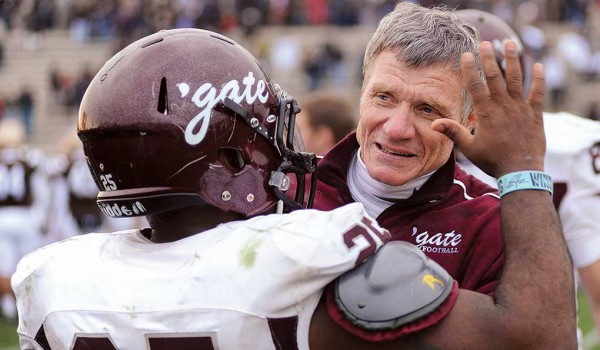Full Circle
I just wanted to let you know how much I appreciate the time and effort you put into writing “Full Circle” (winter 2014, pg. 31).
As a current senior, I have had the pleasure of getting to know Ron Hoham the past four years. The article was very well-written, and the infographic is absolutely amazing; without a doubt the most highly polished work I’ve ever seen in the Scene.
I was stunned by just how many alumni and friends Ron has kept in touch with over the years. Even though I see him on an almost-daily basis, I never truly appreciated his legacy to Colgate until reading your article. Thank you again for taking the time to celebrate the life of a friend and mentor who has inspired many and still continues to inspire others today.
— Ibrahim Yucel ’14, Pittsburgh, Pa.
It was a pleasure to read about Ron Hoham.
My wife and I met him for the first time at my 35th Reunion. He gave a wonderful walking tour of the trees on the Quad. I wish I had the tour as a freshman. The only tree I do remember as a freshman is no longer there, a ginkgo by Stillman Hall. It was cut down without consulting the biology department.
Later, we went to Ron’s home and saw his impressive garden. We also learned how he battled deer.
Ron is a great ambassador for Colgate.
—David DiBenedetto ’76, Pembroke, Mass.
It was very rewarding to read your recent Colgate Scene article on Ron Hoham about all the wonderful relationships he has developed with numerous past students, and his love of fitness and his friendships that have continued since his retirement.
I have known Ron since 1980 and have kept a close relationship with him over the years. We have both backpacked a few times out west, as well as done some hikes up in the New York area since I moved back to the D.C. area in 1990.
Thanks again for bringing this wonderful profile of Ron and his large family of good friends and fitness to us all.
—Steve Kokkinakis ’83, Silver Spring, Md.
Go more green
I was encouraged to read “Go Green, Maroon” in the winter issue. That Colgate is taking climate change this seriously, at this level of commitment and ingenuity, is heartening and laudable.
And now, may I suggest the next logical step? The university should get rid of any investments it holds in fossil fuels.
As [green movement spokesman] Bill McKibben and others have noted, fossil fuel companies have laid claim to five times the amount of gas, coal, and oil that our best scientists tell us is safe to burn and still have a livable world. Is the university being true to its mission if it provides a carbon-neutral bubble for its present and future students, and then sends them out into a ravaged civilization that will be unrecognizable from the world they have studied? Is it right to profit from this catastrophe?
So, keep up the good work and take the next step. Dump the fossil fuel stocks.
—Craig Heverly ’60, Portland, Ore.
Giant among men
George Hudson (In tribute, winter 2014) was truly a giant among men — including me at 6’4″; he was at least an inch taller.
I was introduced to George by my sister Celia (Smith) Carroll ’76. His course on John Milton and John Donne was an eye-opener for me.
We developed a close relationship. In a moment of poor judgment, George asked me to stay at his house while he was on an expedition in Japan. The assignment included babysitting his 130-pound Irish wolfhound, Liam. My friend and fellow house sitter Jeffrey “Jesse” Leswing ’77 and I appreciated the sophisticated luxury of his rural abode, and entertained our friends accordingly. We were particularly impressed with the color TV that George had constructed from a kit.
I am grateful for George coming to my rescue on the academic front. I had committed to the London Study Group my last semester and discovered I was one credit short, in economics. George crafted (with colleague Hugh Pinchin) an inspired independent self-study course that entailed economics combined with a scavenger hunt of his favorite haunts across the U.K.: the Tate (Fragonard, The Swing), John Donne’s tomb at St. Paul’s, an iconic Dartmoor pub (Plume of Feathers), a hike across the eerie moors, and other incredible sights.
At my 25th Reunion, he told me that he had undertaken a housekeeping project and came across my independent study journal. Any other professor likely would have consigned it to the dumpster, but he was hoping to connect with me at reunion, where he could personally return it.
—Turner Smith ‘77, Rye, N.Y.
Critical thinking
I was struck by Kathryn David’s comment that “At Colgate I was taught to think critically” (Letters, winter 2014). I thought that was a wonderful appraisal of the education being offered.
An article by Kathleen Parker of the Washington Post (“Diminishing returns of college education,” Jan. 28, 2014) highlights the need for “core curriculums — the traditional arts and science coursework essential to developing critical thinking,” which, happily, is Colgate’s criteria for an education.
—John Downie ’46, Ashley Falls, Mass.
On “Saramaccan Serenade”
As a returned Peace Corps volunteer (Jamaica 2010–12), I want to express how much I enjoyed John Williams’s recollections on his service in Suriname (autumn 2013, pg. 34). Reading his experiences was not only entertaining, but also rekindled memories of experiences in the same vein that all volunteers have and hold dear.
I believe of greater significance are John’s candid reflections on how this experience changed him. If one truly immerses oneself in the Peace Corps experience, it is all-encompassing and challenging, at times even exasperating; yet, I unhesitatingly recommend it. What you will receive in return for your openness is incalculable. Probably one of the hardest aspects of Peace Corps volunteers’ service is their reintegration into our complex society’s tempora et mores after living a lifestyle centered on personal interaction.
Colgate’s Peace Corps legacy goes much deeper than the number of alumni who have served through the years, to the organization’s very inception. In February 1961, F. Gordon Boyce ’39 was called upon by Sargent Shriver to join his triumvirate and take the ethereal concept of the Peace Corps to that of a functioning program. During this formative period, Mr. Boyce became a deputy director of the Peace Corps and the president and director of its Experiment in International Living program. More of his firsthand report on his involvement with the nascent Peace Corps may be read in the May 1961 issue of the Colgate Alumni News.
—Calvin Crouch Jr. ’78, Scheduled for Peace Corps, Philippines 2014–16
Thanks and congratulations to Coach Biddle
Congratulations to Coach Biddle on his fine career (“Biddle retires,” Go ’gate, winter 2014). I graduated in 1974 with Mark van Eeghen and Mike Milbury, who epitomized toughness and determination on the playing field. This approach has been a hallmark of Colgate athletics and has produced many great victories, careers, memories, and friendships.
As his record indicates, Coach Biddle belongs up there with Fred [Dunlap], Jack [Bruen], and the General [Terry Slater] as exceptional leaders. The likes of Kenny Gamble ’88, Jamaal Branch ’05, Tucker Neale ’95, Mike Harder ’97, Ryan Vena ’00, Greg Manusky ’88, and Nate Eachus ’12 were all talented athletes who rose to greatness under the leadership and teamwork of coaches who themselves sought something greater in competition. All this at an elite academic school without scholarship blue-chip athletes.
I’m pleased I had the opportunity to meet Coach Biddle in person at the Air Force dinner with the team in Colorado Springs last August, and I commiserated with everyone on the difficult season that just ended. As Biddle said, change is good for everyone, and I wish Coach Hunt the best of luck. He has some big shoes to fill.
In the meantime, thanks again for the spectacular memories of Raider football these past 18 seasons, especially the 2003 run. You will be missed but never forgotten.
—Michael Carey ’74, Manalapan, N.J.








